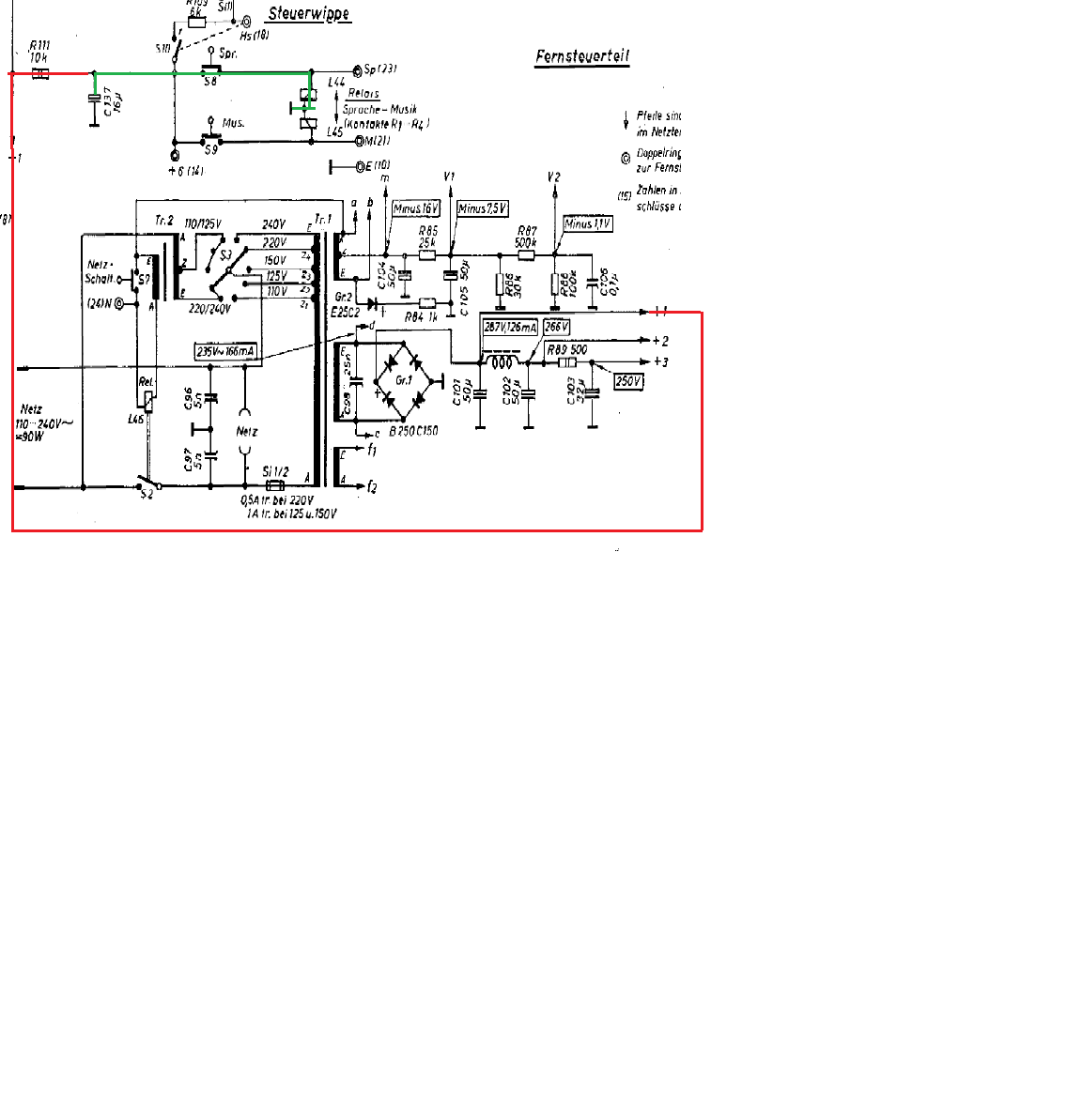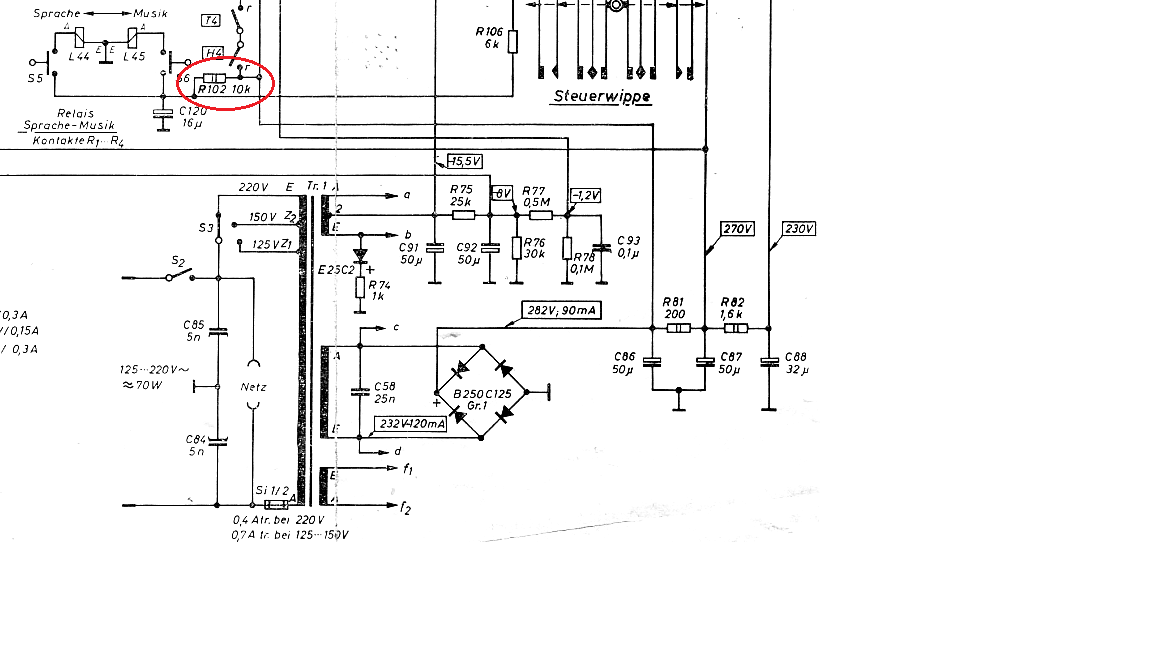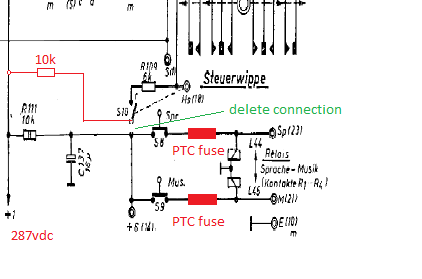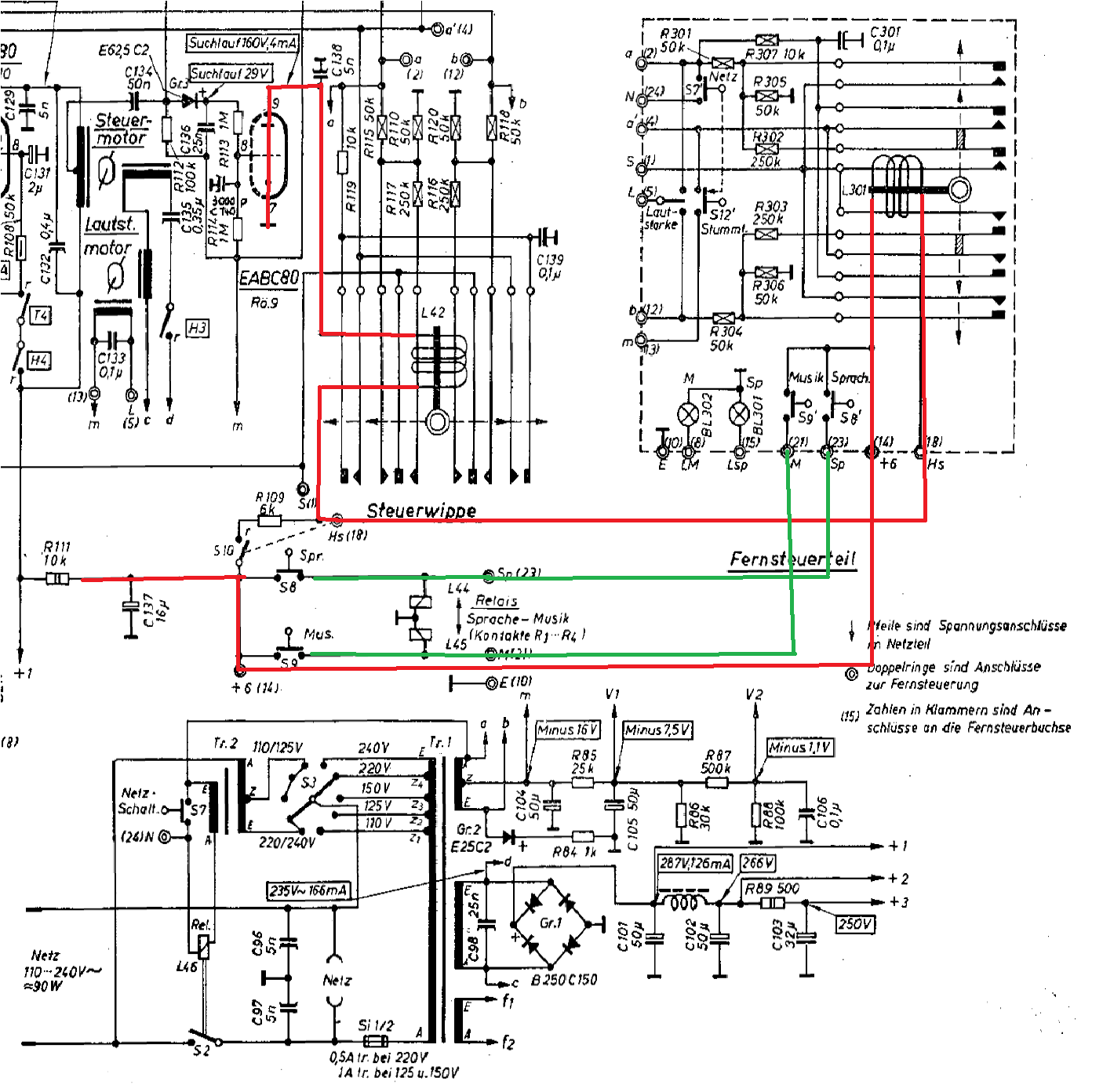I have discovered a "toasted" (burnt) resistor in the Freiburg 7 I am restoring. The resistor, R111, is a 10k, 2 watt resistor that controls the charging of C137 that provides the current necessary to switch the Music/Speech relays. When one pushes the "Sprache" or "Musik" button, C137 discharges through the relays. Once one ceases to push the button, C137 will recharge through R111. During the time the button is pushed until C137 recharges (or nearly recharges) the current through R111 will exceed the wattage rating of this resistor. Since the duty cycle is so low, and wire wound resistor can tolerate overload conditions for a short while, this is okay. However, I can foresee my future yet-to-be-born grandson or granddaughter pushing this button for a long time (and I suspect this is what happened in the distant past). The worst case situation with someone holding his finger on the button shows 8.2 watts (287x287/10000) being dissipated by R111.
Question: What size resistor (wattage) should I use for R111? Should it be a wire wound type or can I use a film type?

Question: What size resistor (wattage) should I use for R111? Should it be a wire wound type or can I use a film type?






